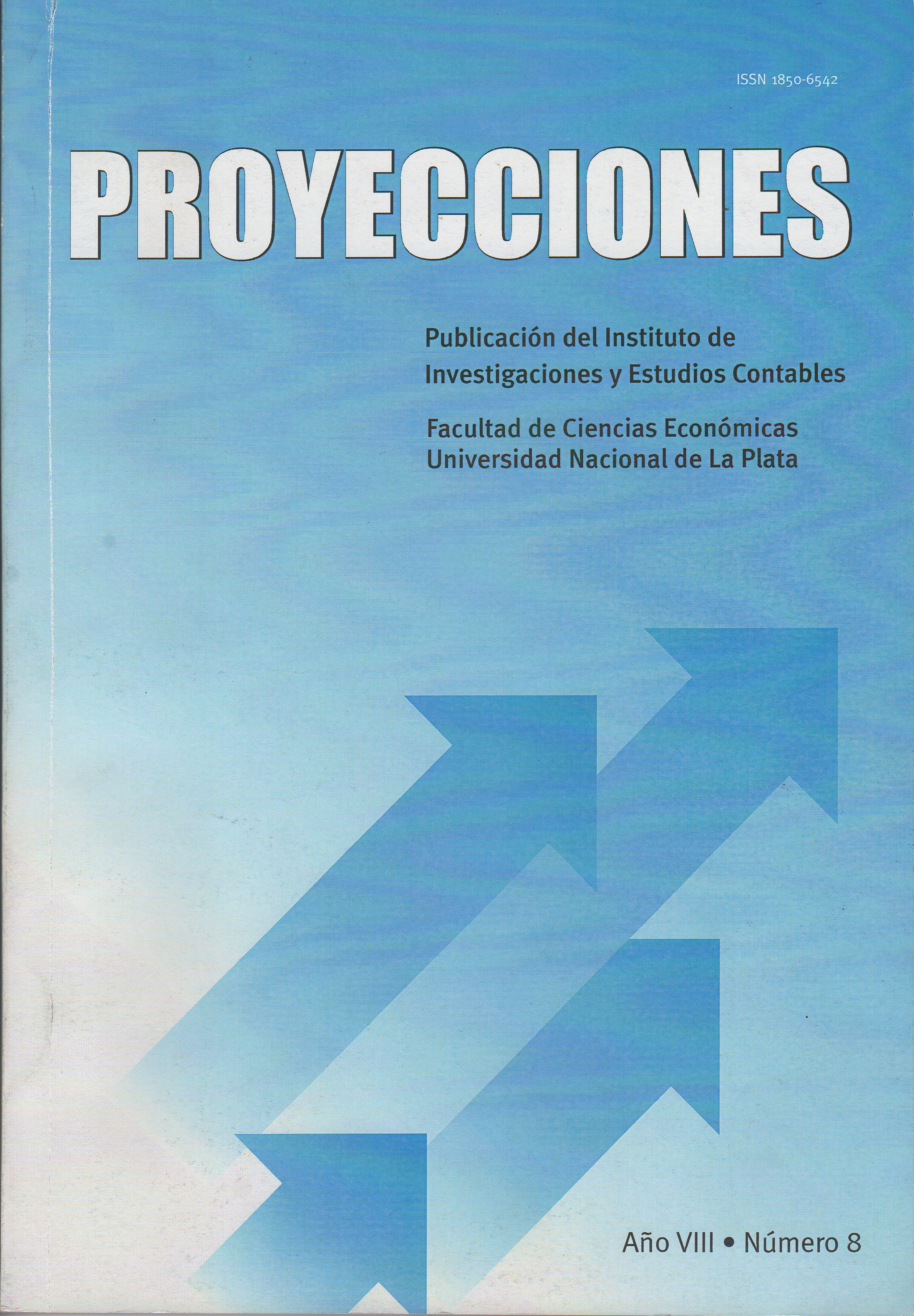Deterioro del Valor de la Llave de Negocio, Primera Parte
Keywords:
Intangible Asset, Goodwill, Impairment Test, Amortization, Shelf Life.Abstract
The current report originates from the analysis about the goodwill impairment test. As a consequence, we wanted to dig deeper into the concepts of loss in value of goodwill and its accounting treatment at present, focusing on goodwill with an indefinite shelf life.
The employed methodology consists of a doctrinal and normative kind of exploratory research, national and international, and the beginning of an empirical study in which considerate cases of our own elaboration, taken from our database.
For the analysis of the cases, two companies, currently listed in the national stock market have been taken into account; in that regard, the presented information for the operations of 2011, 2012 and 2013 has been relieve. Although getting the previously mentioned information is difficult, it has been possible to gain access to two companies that register the goodwill value as a part of their intangible assets. In one of the exposed case, it was clear that while the impairment criteria application was not obligatory, the information is presented in a much less detailed way.
As a conclusion, it seems that companies avoid the impairment test application, even though they risk the amortization model’s disadvantages.
By the moment of revealing the information and performing the analysis, it was exposed that companies apply the impairment criteria mainly with formal aims; this is only to fulfill the rule that says so, what proves that it is not a priority improving the applicability of the countable information provided by the users.
This paper only represents the first exploratory phase of the treatment in companies from the local environment; it is recommended that to keep digging, in order to gain a better foundation in the conclusion. Nevertheless, everything seems to indicate that the old debate about whether to amortize the goodwill value or not, is somehow not over, because, although amortization does not represent the best choice, the impairment test is something that the people involved in the countable states preparation are reluctant to apply, due to the previously mentioned causes.
As a way of closure, it is important to highlight that the core issue, which cannot be missed and must have priority, is to improve the usefulness of countable information offered to the users.
Downloads
Metrics
References
Federación Argentina de Consejos Profesionales de Ciencias Económicas (FACPCE), (2000). Resolución Técnica Nº 18, Normas Contables Profesionales: Desarrollo de algunas cuestiones de aplicación particular. Buenos Aires: Edit. La Ley.
Fowler Newton, E. (2010). Contabilidad Superior, Buenos Aires: Ed. La Ley.
IASB (2008). Norma Internacional de Contabilidad 36: Deterioro del Valor de los Activos. Obtenido el 29 de Octubre de 2013 de: www.facpce.org.ar
Pahlen Acuña, R., Campo, A., Chaves, O., Fronti de García, L., Helouani R., y Viegas J. (2010). Contabilidad Pasado, Presente y Futuro, Buenos Aires: Ed. La Ley.
Ruiz, P. (2009). Deterioro del valor de los activos: test de impairment. Obtenido el 30 de Septiembre 2013 de: http://www.accid.org/revista/documents/Deterioro_del_valor_de_los_activos,_test_de_impairment._Pascual_Ruiz.pdf
Downloads
Published
How to Cite
Issue
Section
License
El material publicado en la revista se distribuye bajo una licencia de Creative Commons de Atribución-NoComercial-SinDerivadas 4.0 Internacional (CC BY-NC-ND 4.0). Esta licencia obliga a otros a dar crédito de manera adecuada, brindar un enlace a la licencia, e indicar si se han realizado cambios; no permite hacer uso comercial de la obra; y si se remezclara, transformara o creara otro material a partir de la obra, no podrá ser distribuida esa modificación.




























